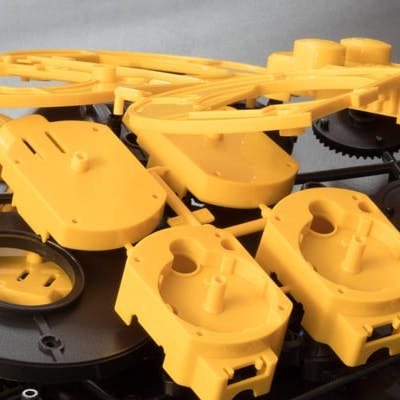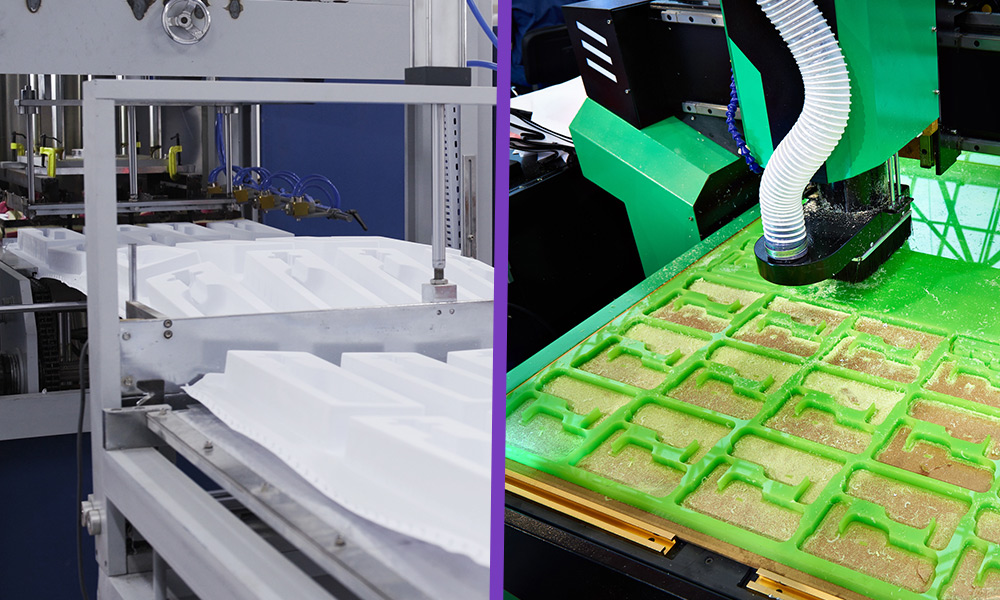Just How Plastic Injection Molding Drives Effectiveness in Mass Production
Just How Plastic Injection Molding Drives Effectiveness in Mass Production
Blog Article
The Future of Plastic Shot Molding: Fads and Technologies to See
As the plastic injection molding sector advances, several vital fads are arising that pledge to improve its landscape. Automation and smart manufacturing techniques are established to improve performance, while the shift towards lasting materials reflects an expanding environmental awareness.
Automation and Smart Production
As the plastic shot molding sector progresses, automation and wise production are taking center phase, reinventing manufacturing procedures - Plastic Injection Molding. The combination of sophisticated technologies such as robotics, IoT (Net of Points), and synthetic knowledge is making it possible for manufacturers to boost performance, lower operational costs, and enhance product quality. Automated systems simplify operations, minimizing hand-operated treatment and enhancing throughput, which is important in satisfying the rising demand for rapid production cycles
Smart manufacturing technologies promote real-time monitoring and data evaluation, enabling business to enhance equipment efficiency and anticipate maintenance requirements. This positive method not only reduces downtime but also expands the lifespan of equipment. Moreover, using collaborative robotics, or cobots, enhances the adaptability of production lines, allowing machines and employees to operate alongside safely and efficiently.
The adoption of automation in plastic injection molding is not just a pattern yet a critical critical for services intending to stay competitive in an international market. By using these technologies, manufacturers can achieve greater precision, reduce waste, and adapt swiftly to changing consumer demands, positioning themselves for lasting development in a progressively computerized future.
Sustainable Materials and Practices
The push towards automation and smart manufacturing has actually paved the means for a higher emphasis on lasting materials and methods within the plastic injection molding sector. Companies are increasingly seeking green choices to conventional petroleum-based plastics, resulting in the adoption of recycled and bio-based products. These lasting materials not just minimize environmental impact but likewise straighten with consumer demand for greener items.

In addition, collaboration in between suppliers, product suppliers, and environmental organizations is promoting development in the advancement of lasting materials that fulfill performance criteria without jeopardizing quality. As policies around plastic use end up being stricter, the industry is poised to adjust by welcoming these sustainable strategies, making certain lasting practicality and minimizing reliance on non-renewable resources. The combination of sustainability into plastic injection molding is not merely a fad; it is becoming a necessary part of company obligation and functional excellence.
Developments in 3D Printing
Current advancements in 3D printing innovation are considerably more info here changing the view landscape of plastic injection molding. Difficult or once challenging to achieve via typical techniques, the integration of additive manufacturing processes permits for the rapid prototyping of intricate geometries that were. This ability not just increases product growth cycles but additionally minimizes material waste, straightening with the growing demand for sustainable manufacturing methods
In addition, the emergence of crossbreed production strategies, which incorporate 3D printing and shot molding, supplies manufacturers the capacity to develop detailed layouts while preserving the effectiveness of mass production. This technique enables the production of customized parts customized to specific consumer demands without sacrificing the speed and scalability that shot molding provides.
In addition, advancements in products, such as high-performance polymers and compounds specifically developed for 3D printing, are boosting the useful abilities of published parts. These products can stand up to greater stress and show boosted thermal residential properties, making them ideal for more requiring applications.
As 3D printing continues to advance, its assimilation right into plastic injection molding processes promises to enhance performance, reduce expenses, and foster technology in product style, placing makers to much better fulfill the obstacles of a competitive market.
Information Analytics and IoT Integration
Data analytics and the combination of the Internet of Things (IoT) are changing plastic injection molding by giving manufacturers with extraordinary insights into their procedures. By leveraging real-time information gathered from interconnected makers and sensors, producers can monitor efficiency metrics, determine inadequacies, and optimize production procedures. This data-driven approach facilitates anticipating maintenance, minimizing downtime and extending devices lifespan.
Moreover, IoT integration enables for boosted quality assurance. By constantly tracking variables such as cycle, temperature level, and stress times, manufacturers can promptly discover variances from developed criteria and make modifications in actual time. This not just improves product uniformity however also decreases waste and scrap prices.
The blend of information analytics and IoT technologies likewise empowers makers to adopt even more nimble production methods. With accessibility to extensive data analytics, companies can reply to market demands with higher adaptability, changing production routines and configurations as needed. This adaptability is vital in a rapidly transforming manufacturing landscape.

Customization and Design Adaptability
Exactly how can customization and style adaptability improve the competition of plastic injection molding? Customization allows manufacturers to meet details customer needs, accommodating special dimensions, forms, and capabilities that common products might not satisfy.
Improvements in design innovations, such as computer-aided style (CAD) and fast prototyping, further bolster this trend. These devices allow developers to create complicated geometries and complex patterns, which can be flawlessly incorporated right into the manufacturing procedure. Because of this, suppliers can react promptly to transforming customer preferences and market demands.
Furthermore, the application of modular tooling systems improves layout adaptability, enabling quicker modifications between different item styles without comprehensive downtime. This flexibility can bring about minimized lead times and lower manufacturing prices, making companies a lot more affordable and active. Eventually, like it accepting customization and layout adaptability in plastic shot molding not only elevates item offerings but also strengthens market positioning in an ever-evolving landscape.
Verdict
The future of plastic shot molding is defined by significant developments in automation, sustainable practices, and innovative products. Customization via modular tooling and quick prototyping will certainly allow producers to remain competitive and receptive to the dynamic demands of the market.

The future of plastic injection molding is defined by significant advancements in automation, lasting techniques, and innovative products.
Report this page